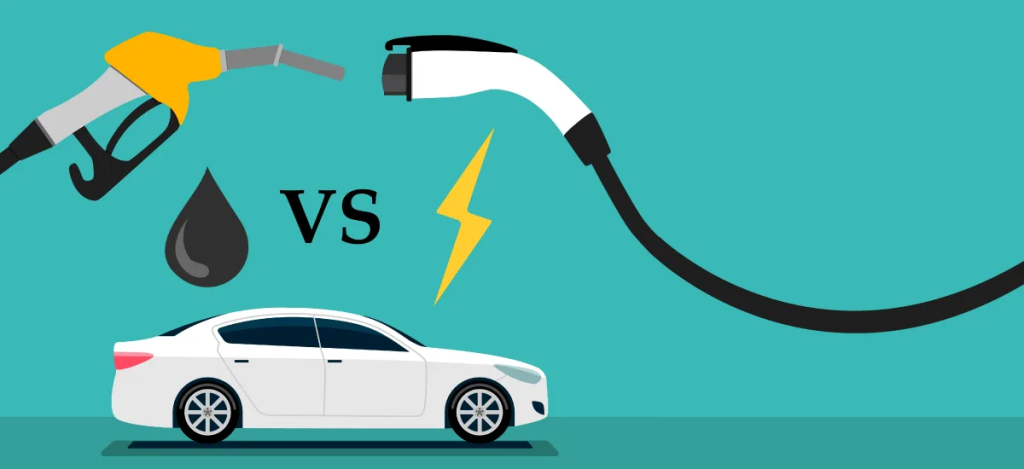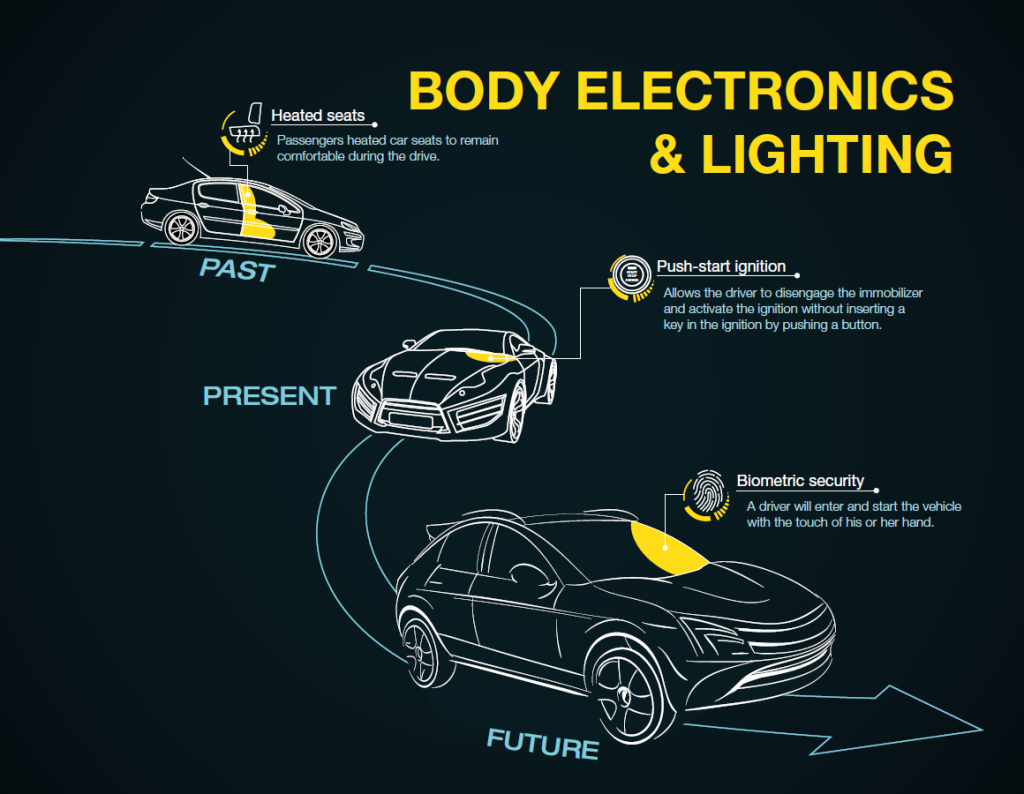Hybrid cars have gained popularity in recent years due to their fuel efficiency and lower emissions. However, some people may be curious about how the driving experience differs from traditional gasoline-powered cars. In this blog, we will explore what it’s like to drive a hybrid car and how it compares to other types of cars.

What is the driving experience like in a hybrid car?
Here are some points on what the driving experience is like in a hybrid car:
- Hybrid cars are generally quieter than conventional cars, especially when they are operating in electric mode.
- The acceleration in a hybrid car is smooth and steady, without the jerky motion that is often experienced in traditional cars.
- Hybrid cars are more fuel-efficient, which means you will have to fill up less frequently.
- The regenerative braking system in hybrid cars provides a different driving experience, as it allows the car to capture energy and convert it into electricity to recharge the battery.
- Due to the electric motor in a hybrid car, there is no lag time when you press the accelerator, which can provide a more responsive driving experience.
- Many hybrid cars have a continuously variable transmission (CVT) that can provide a seamless transition between gears.
- Hybrid cars can provide a smoother ride due to the advanced suspension system that absorbs bumps and shocks.
- The engine in a hybrid car does not need to work as hard as a traditional engine, which can provide a quieter driving experience.
- The electric motor in a hybrid car can provide a boost of power when needed, such as when passing on the highway.
- The battery in a hybrid car helps to maintain a steady speed and prevents the car from losing speed when going up hills.
- The start-stop feature in hybrid cars automatically turns off the engine when you come to a stop, which can reduce noise and emissions.
- The instant torque provided by the electric motor in a hybrid car can make merging onto highways and passing other vehicles easier.
- Many hybrid cars have an Eco mode that can be activated to optimize fuel efficiency and reduce emissions.
- The low center of gravity in hybrid cars can provide better handling and stability on the road.
- The engine in a hybrid car is often smaller and lighter, which can improve maneuverability and make the car easier to park.
- The hybrid drivetrain can provide a smoother shifting experience compared to traditional cars.
- Many hybrid cars have a display screen that shows the energy flow and efficiency of the car, which can provide a more engaging and informative driving experience.
- The regenerative braking system in hybrid cars can reduce the wear and tear on the brakes, which can save money on maintenance.
- Hybrid cars can provide a more comfortable driving experience due to the advanced features and amenities that are often included, such as heated seats and climate control.
- The battery in a hybrid car can provide power to other components, such as the air conditioning, even when the engine is turned off.
- The electric motor in a hybrid car can help to reduce emissions and make driving more environmentally friendly.
- The engine in a hybrid car often runs at a more efficient speed, which can improve overall fuel economy and reduce wear and tear on the engine.
- The powertrain in a hybrid car can provide a more reliable driving experience due to the redundancy of having both an engine and electric motor.
- Hybrid cars can provide a more versatile driving experience, as they can switch between electric and gas power depending on the situation.
- The advanced technology and features in hybrid cars can provide a more modern and sophisticated driving experience compared to traditional cars.

How the driving experience in a hybrid car differs from other cars
Here are some points on how the driving experience in a hybrid car differs from other cars:
- Hybrid cars have a smoother and quieter driving experience due to the electric motor assist.
- Regenerative braking in hybrid cars provides a different braking sensation, with the car slowing down more gradually and efficiently than traditional brakes.
- The start-stop feature in hybrid cars turns off the engine when the car is idling, reducing engine noise and vibration.
- Hybrid cars have better acceleration than traditional cars due to the instant torque from the electric motor.
- The transition between electric and gas power in a hybrid car is seamless, without any noticeable shift or jerk.
- The battery pack in a hybrid car adds weight to the car, which can affect handling and cornering, but most hybrids are designed to minimize this impact.
- Hybrid cars often have a different transmission, such as a continuously variable transmission (CVT), which can provide a different driving experience.
- The range anxiety that comes with driving an electric car is not present in a hybrid, since it can switch to gas power when the battery is low.
- Hybrid cars require less frequent stops at the gas station, reducing the need for refueling and saving time.
- The energy monitor and dashboard display in hybrid cars provide real-time feedback on fuel economy, helping drivers optimize their driving style.
- The regenerative braking system in hybrid cars can recharge the battery while driving, further enhancing fuel efficiency.
- The electric motor in a hybrid car provides additional power when needed, such as during acceleration or when climbing hills.
- The quiet cabin of a hybrid car can enhance the driving experience by reducing road noise and wind noise.
- Some hybrid cars have advanced safety features, such as lane departure warning and adaptive cruise control, that can make driving safer and more comfortable.
- The hybrid drivetrain can provide a more responsive and nimble driving experience, with power delivery that is more linear and predictable.
- The aerodynamic design of many hybrid cars can reduce wind resistance and improve stability at high speeds.
- The fuel economy of a hybrid car can save drivers money on gas over time, making the overall driving experience more economical.
- Hybrid cars often have longer warranties than traditional cars, providing drivers with greater peace of mind.
- The lower emissions from a hybrid car can make for a cleaner and more environmentally friendly driving experience.
- The relatively quiet and smooth driving experience of a hybrid car can make for a more relaxing and enjoyable ride.
Note: Some of these points may overlap with the previous list on the driving experience in a hybrid car, but they are specifically focused on the differences between hybrid and non-hybrid cars.
Advantages and disadvantages of the driving experience in a hybrid car
some advantages and disadvantages of the driving experience in a hybrid car:
Advantages:
- Fuel efficiency: Hybrid cars offer better fuel efficiency, resulting in lower fuel costs and reduced carbon emissions.
- Regenerative braking: Hybrid cars use regenerative braking technology to capture energy that is typically lost during braking and use it to recharge the batteries.
- Smooth acceleration: Hybrid cars provide smoother and quieter acceleration due to the electric motor’s instant torque.
- Reduced noise pollution: Hybrid cars produce less noise pollution than traditional gasoline-powered cars.
- Reduced maintenance costs: Hybrid cars require less maintenance and have fewer mechanical components to repair or replace.
- Tax incentives: In many countries, hybrid car owners are eligible for tax incentives and rebates.
Disadvantages:
- Higher purchase cost: Hybrid cars are typically more expensive than their traditional counterparts.
- Limited driving range: Some hybrid cars have a limited driving range before they need to switch to gasoline power.
- Limited power: Hybrid cars may not have as much power as traditional gasoline-powered cars, making them less suitable for high-speed driving or heavy loads.
- Battery life: Hybrid car batteries can be costly to replace, and their lifespan is limited.
- Complex technology: Hybrid cars have complex technology that may require specialized technicians to maintain and repair.
- Potential for reduced efficiency in extreme temperatures: Hybrid car batteries can be affected by extreme temperatures, leading to reduced efficiency in extreme heat or cold.
It’s worth noting that some of these advantages and disadvantages may vary depending on the specific make and model of the hybrid car.
Conclusion
In conclusion, the driving experience in a hybrid car can be quite different from that of a traditional gasoline-powered car. The smooth and quiet ride, improved fuel efficiency, and reduced emissions are some of the key advantages of driving a hybrid car. However, there may also be some disadvantages such as a higher purchase price, less responsive acceleration, and the need for specialized maintenance. Ultimately, the driving experience in a hybrid car depends on personal preference and priorities, but it is clear that hybrid cars offer a viable alternative to traditional cars for those seeking a more eco-friendly and efficient mode of transportation.
